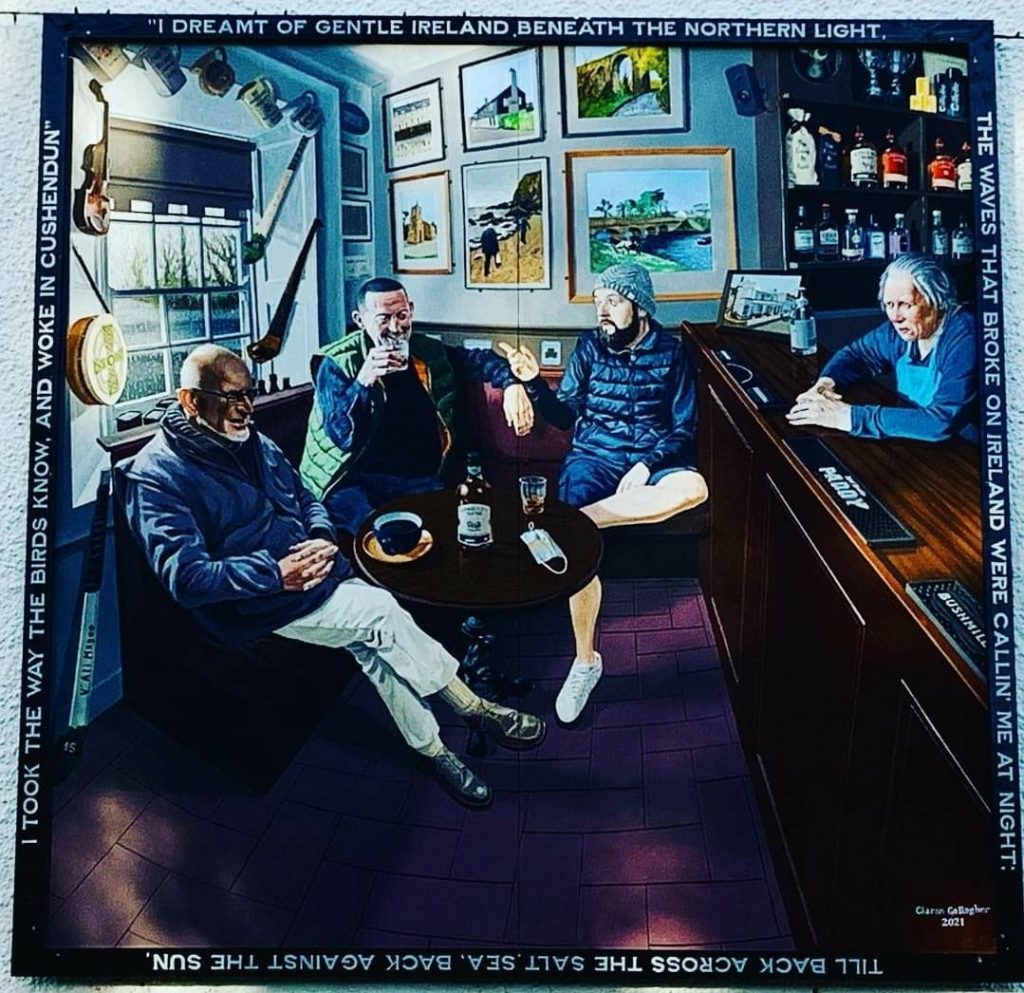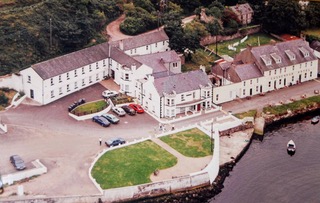“I dream’t of gentle Ireland beneath the Northern Light,
The waves that broke on Ireland were calling me at night;
Till back across the salt sea, back against the sun,
I took the way the birds know, and woke in Cushendun”
Moira O’Neill ‘Songs of the Glens of Antrim’

Today the Cushendun Hotel is the only remaining hotel in this village that used to have three, all sited along the mouth of the Glendun River, looking out across gently spectacular Cushendun Bay.
The buildings that were to become the Cushendun Hotel and the adjacent Glendun Hotel were built around 1860 by Benjamin Maxwell, on behalf of Nicholas Andrew De la Cherois Crommelin, who developed an industrial mill complex there. This comprised a scutch mill, spinning mill, starch works, corn store, rope works and corn warehouses. The only steam-driven mill complex in the Glens of Antrim, it had its furnace hall in what is now the large lounge of the Cushendun Hotel. Bleach greens and a reservoir were located behind the mill, with a stone water tower on the hill behind. The mill employed up to sixty people but the scale of the business was too ambitious for its location and it closed in 1882.

Part of the site was later purchased by Maurice Finlay, who established the Anchorage Hotel there. It was bought by the Elliot family in 1927 and renamed the Glendun Hotel. In 1936 the Elliots also built the Bay Café, which later became the Bay Hotel. Both these hotels were sold to James McAllister in 1964.
The present Cushendun Hotel site was part of the mill plus a former grocery shop built in 1923. Mrs Elizabeth McBride had bought the mill site in 1920 and she opened her hotel on 15 November 1925. Initially it comprised sixteen bedrooms, two toilets, one bathroom and private and public sitting rooms. In 1927 Mrs McBride purchased the grocery shop and this allowed for an expansion to thirty rooms. Visitor numbers were impressive!
Mrs McBride, whose entrepreneurial mind powered the business, invested to provide all the latest requirements of a modern hotel, including hot and cold water in every room, sprung mattresses and electric light. In 1935 she bought at auction in Glasgow the fixtures and fittings from a luxury liner – the Minnewaska of the Red Star Line, built by Harland & Wolff – which she used to furnish the rooms.
The hotel was operating at a time before there was easy access to public transport, public water supply (established in 1929) and a public sewerage system (established in 1948). It was not until 1951 that houses in Cushendun were connected to mains electricity. With no refrigerators or freezers, all food had to be freshly supplied, much from the hotel’s farm garden.
Guests took all their meals in the hotel, usually eating together at a single sitting. Both the Bay Hotel and the Cushendun Hotel had tennis courts, and swimming, fishing and picnics were popular pastimes.
Among the hundreds of summer guests were many people of interest. One famous guest was Mercedes Gleitz, the first woman to swim the English Channel, who stayed in the Cushendun Hotel before attempting to swim the North Channel to Kintyre in August 1929. Acclaimed artists were visitors to the hotel – among them Theo J Gracey, Louis Affolter and Roland Hill – and notable politicians and academics also stayed there.
During the Second World War, following the Belfast blitz, the hotel hosted evacuee children from Hardinge Street Christian Brothers School. It also accommodated troops prior to D-day.

Many guests and their families have developed friendships and relationships both among themselves and with locals. Numerous former holidaymakers now reside in Cushendun, and family members of hotel guests over the years continue to visit the beautiful village that I am blessed to call home.
The hotel remains a historic landmark, its fine old furnishings and décor meticulously cared for by Randal McDonnell*, grandson of its founder. Outside, steadfast on the riverbank, Johann the goat, a much-loved commemorative sculpture by Deborah Brown, stands guard.
* McDonnell’s Randal’s Ramblings is the source of much of this information
Jude McNeill (Cushendun Building Preservation Trust)
